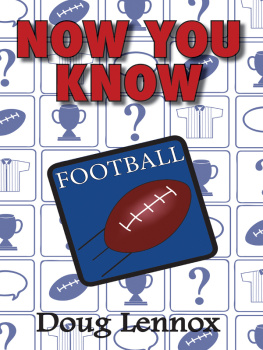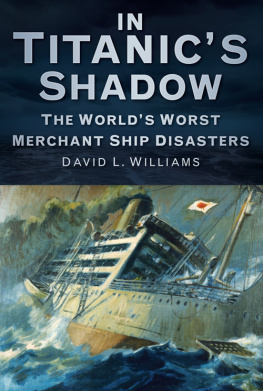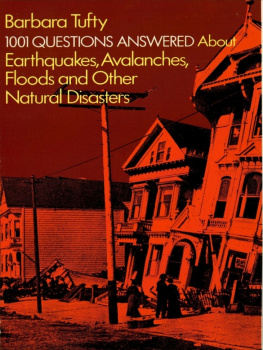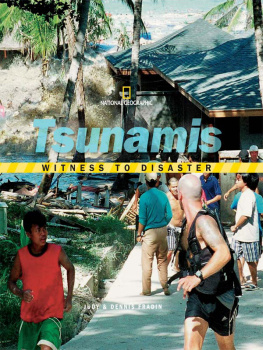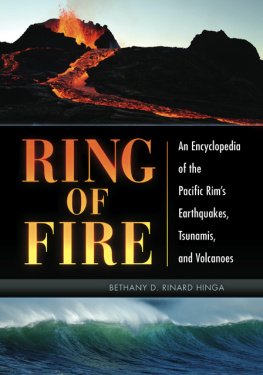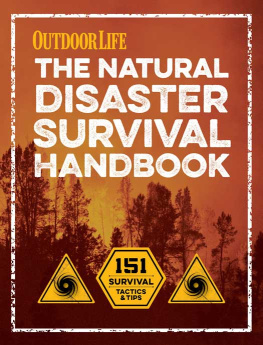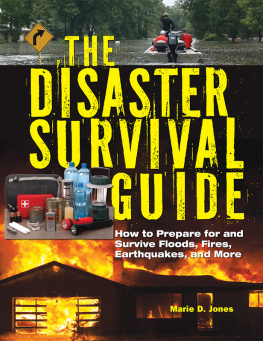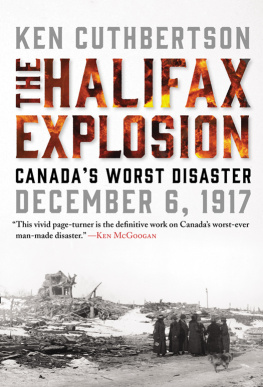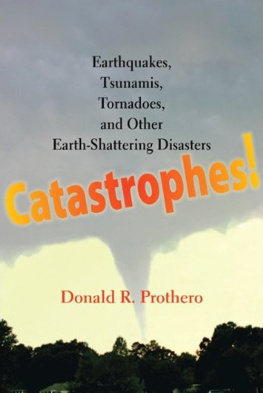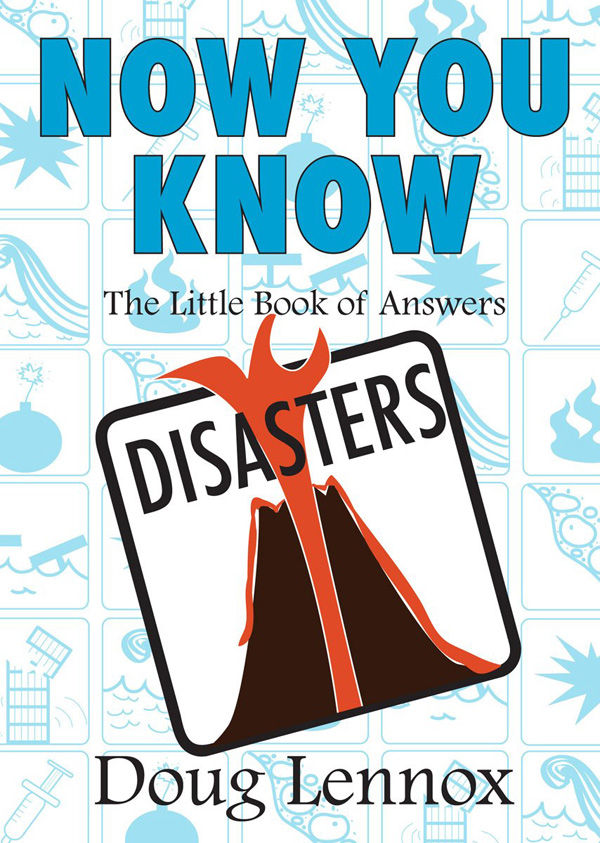NOW YOU KNOW
DISASTERS
NOW YOU KNOW
DISASTERS
DOUG LENNOX

THE DUNDURN GROUP
TORONTO
Copyright Dundurn Press Limited, 2008
All rights reserved. No part of this publication may be reproduced, stored in a retrieval system, or transmitted in any form or by any means, electronic, mechanical, photocopying, recording, or otherwise (except for brief passages for purposes of review) without the prior permission of Dundurn Press. Permission to photocopy should be requested from Access Copyright.
Editor: Edward Butts
Copy editor: Shannon Whibbs
Design: Erin Mallory
Printer: Webcom
Library and Archives Canada
Cataloguing in Publication
Lennox, Doug
Now you know disasters : the
little book of answers / Doug Lennox.
ISBN 978-1-55002-807-2
1. Disasters--Miscellanea. 2.
Accidents--Miscellanea. I. Title.
D24.L46 2008 904
C2008-900234-2
1 2 3 4 5
12 11 10 09 08

We acknowledge the support of The Canada Council for the Arts and the Ontario Arts Council for our publishing program. We also acknowledge the financial support of the Government of Canada through the Book Publishing Industry Development Program and The Association for the Export of Canadian Books, and the Government of Ontario through the Ontario Book Publishers Tax Credit program, and the Ontario Media Development Corporation.
Care has been taken to trace the ownership of copyright material used in this book. The author and the publisher welcome any information enabling them to rectify any references or credits in subsequent editions.
J. Kirk Howard, President
Printed and bound in Canada.
www.dundurn.com
Dundurn Press
3 Church Street, Suite 500
Toronto, Ontario, Canada
M5E 1M2
Gazelle Book Services Limited
White Cross Mills
High Town, Lancaster,
England LA1 4XS
Dundurn Press
2250 Military Road
Tonawanda, NY
U.S.A. 14150
NOW YOU KNOW
DISASTERS
CONTENTS
PREFACE
Documented accounts of disasters have been found in the earliest chronicles of mankind. Earthquakes, epidemics, and famines colour the pages of the Bible and the epic tales of the Egyptians, Greeks, Romans, and other ancient peoples. Historians have found that many stories from antiquity, once thought to be pure myth, have roots in historical fact. Even the legend of Atlantis can be traced back to a cataclysmic ancient disaster.
No period of history has been free of disastrous events. From ancient times up to the present, tragedies of massive scale have shocked and stunned cities and nations, sending entire populations reeling. They have even changed the course of history. Some disasters, such as earthquakes and volcanic eruptions, strike suddenly. Others, epidemics for example, take hold of us by stealth. Many disasters have natural causes tsunamis, avalanches, or many fires and shipwrecks, for instance. With the advance of technology, however, more and more disasters have the hand of humans in them: plane crashes, collapsing bridges, and blasts caused by explosive materials. All too often the loss of life caused by a natural disaster is escalated by such human factors as war or lack of preparedness. And then there are the single disasters humans inflict upon one another in the form of terrorism and mass murder.
This book serves up questions and answers, lists of significant events, quick facts, and intriguing sidebars concerning some of the most dramatic and tragic disasters the world has ever known. I hope readers will find this a fascinating and thought-provoking compendium of some of historys most calamitous incidents.

AVALANCHES
AND
LANDSLIDES
What causes an avalanche?
An avalanche can only happen after a heavy snowfall. There must be an insecure snow base. The initial slide of accumulated snow can be triggered by an earth tremor, a noise, or the uneven melting of the snow base. Even the vibrations caused by skiers can touch off an avalanche. Once the snow and ice start to move, they can quickly become an unstoppable destructive force.
How did an avalanche bring tragedy to Hannibals army?
The Carthaginian general Hannibal made one of historys great military accomplishments when he took an army (including war elephants) through the Alps to attack Rome. However, Hannibals own impatience placed his army in danger, with costly results. In October 218 BC, heavy snows and severe cold held up the armys progress through the mountains. After waiting for two days for the weather to improve, Hannibal unwisely decided to cross the Col de la Traversette. Fresh snow on top of crusted snow provided prime avalanche conditions. As the army began to move, the snow beneath the feet of the men and animals suddenly gave way. Eighteen thousand men, 2,000 horses, and several elephants were swept to their deaths.
Where, during the First World War, were more people killed by avalanches than by gunfire and bombs?
In the Tyrol, where Austrian and Italian troops faced each other on deadly terrain, avalanches touched off by the noises of war proved to be far more deadly than actual battles. One avalanche after another roared down the mountainsides, burying civilians in villages and troops in their barracks. It is estimated that between 40,000 and 80,000 people perished in the snow.
What community was hit by two avalanches in one day?
At 9:36 on the morning of January 11, 1954, an avalanche struck the Austrian village of Blons, near the Arlberg Pass. At 7:00 on the evening of that same day, another avalanche roared down on the tiny community. Even though Blons had taken measures in preparation for an avalanche, the two that struck on that fateful day were especially large. Of the 376 people who made up Blonss population, 111 were killed outright and eight died later. Two residents were never found. Twenty-nine of the villages 90 homes were destroyed. Some survivors were buried for over 60 hours before being dug out by rescuers.
How much of the town of Frank, Alberta, was wiped out by the landslide of April 29, 1903?
Frank wasnt wiped out, as some stories say. About one-quarter of the town was buried in the rock debris from Turtle Mountain, but, in that area, the destruction was complete. Very few survivors emerged from the rocks. The death toll was placed at 70, but because few bodies were recovered, and many itinerant workers had been passing through the town, the actual number of dead was probably much higher.
Who was Frankie Slide?
Five-month-old Marion Leitch was in bed between her parents when the blast of compressed air that preceded the Frank, Alberta, rockslide tore their house from its foundations and flipped it over. Marions parents and her four brothers were killed, but baby Marion was found safe and sound on a pile of hay that had blown from a stable half a mile away. The incredible story inspired a song, The Ballad of Frankie Slide, which told the tale of a baby who was the towns sole survivor of the disaster and was thus named Frankie Slide. This brought about the myth that Marion Leitch was the only survivor of the Frank Slide.


